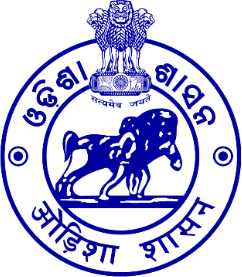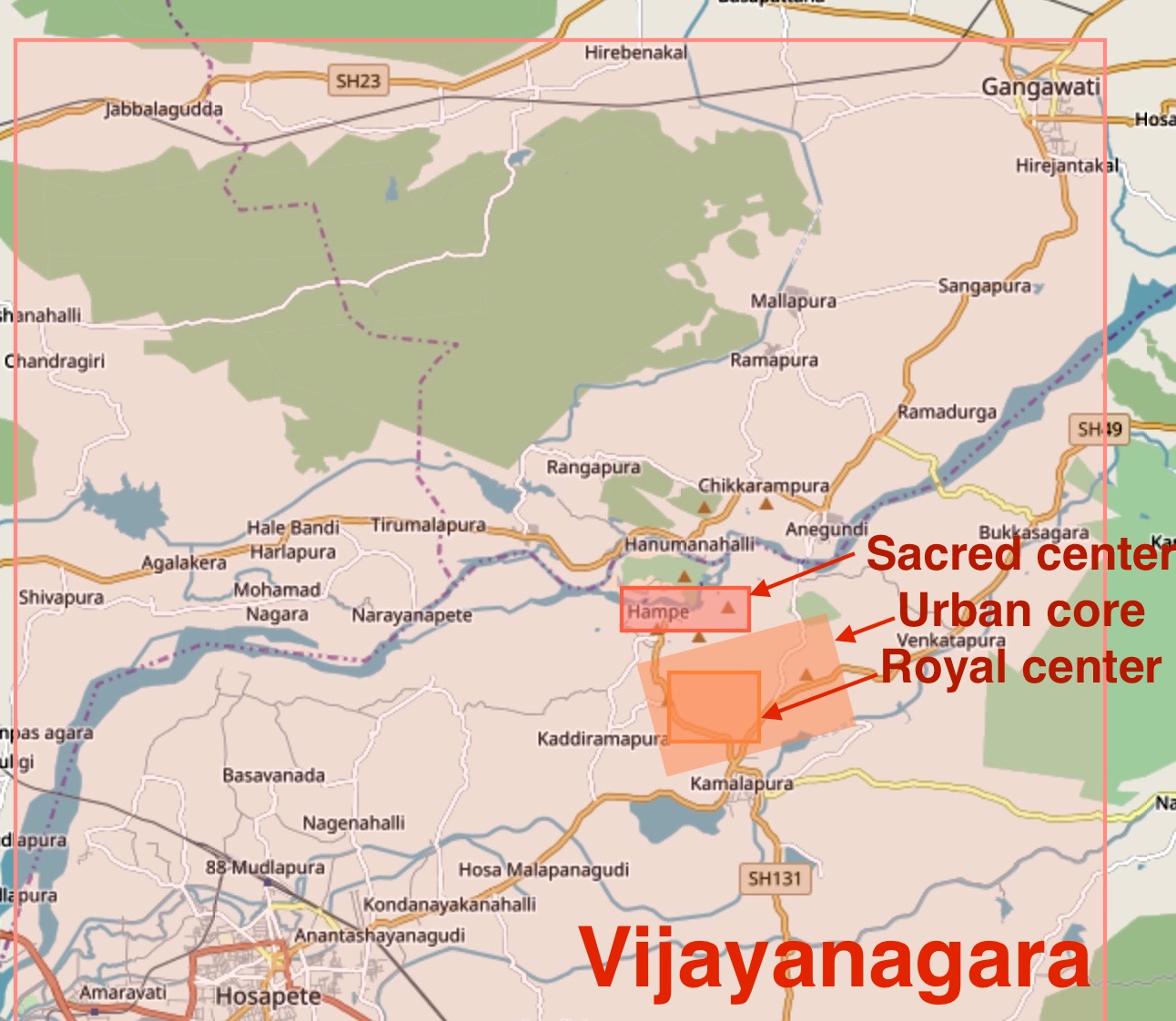|
Udayagiri, Nellore District
Udayagiri is a town in Udayagiri Mandal in the Nellore district of the state of Andhra Pradesh in India. Geography Udayagiri is located at . It has an average elevation of 230 meters (757 feet). History First known history of the city was from 14th century. It was the capital of local kingdom of Langula Gajapati, chieftain to Gajapatis of Odisha. It came under rule of Krishna Deva Raya of Vijayanagara around 1512. The Udayagiri fort, constructed by Langula Gajapati was inaccessible on most sides. It could be only penetrated only by a jungle track in the east side and a pathway on the west side. The siege by Krishna Deva Raya lasted for 18 months and resulted in defeat for Prataparudra Deva of the Gajapatis. During the reign of Gajapatis and the Vijayanagara Empire, the fort was extended. The entire city and the surrounding hill of 1000 feet height were encircled with walls. The fort consisted of thirteen buildings, with eight of them on the hill and five below. ... [...More Info...] [...Related Items...] OR: [Wikipedia] [Google] [Baidu] |
Town
A town is a human settlement. Towns are generally larger than villages and smaller than city, cities, though the criteria to distinguish between them vary considerably in different parts of the world. Origin and use The word "town" shares an origin with the German language, German word , the Dutch language, Dutch word , and the Old Norse . The original Proto-Germanic language, Proto-Germanic word, *''tūnan'', is thought to be an early borrowing from Proto-Celtic language, Proto-Celtic *''dūnom'' (cf. Old Irish , Welsh language, Welsh ). The original sense of the word in both Germanic and Celtic was that of a fortress or an enclosure. Cognates of ''town'' in many modern Germanic languages designate a fence or a hedge. In English and Dutch, the meaning of the word took on the sense of the space which these fences enclosed, and through which a track must run. In England, a town was a small community that could not afford or was not allowed to build walls or other larger fort ... [...More Info...] [...Related Items...] OR: [Wikipedia] [Google] [Baidu] |
Odisha
Odisha (English: , ), formerly Orissa ( the official name until 2011), is an Indian state located in Eastern India. It is the 8th largest state by area, and the 11th largest by population. The state has the third largest population of Scheduled Tribes in India. It neighbours the states of Jharkhand and West Bengal to the north, Chhattisgarh to the west, and Andhra Pradesh to the south. Odisha has a coastline of along the Bay of Bengal in Indian Ocean. The region is also known as Utkala and is also mentioned in India's national anthem, " Jana Gana Mana". The language of Odisha is Odia, which is one of the Classical Languages of India. The ancient kingdom of Kalinga, which was invaded by the Mauryan Emperor Ashoka (which was again won back from them by King Kharavela) in 261 BCE resulting in the Kalinga War, coincides with the borders of modern-day Odisha. The modern boundaries of Odisha were demarcated by the British Indian government when Orissa Province was es ... [...More Info...] [...Related Items...] OR: [Wikipedia] [Google] [Baidu] |
Venkaiah Naidu
Muppavarapu Venkaiah Naidu (born 1 July 1949) is an Indian politician who served as the 13th vice president of India from 2017 to 2022. He is the first Indian vice president born in independent India. He has also served as the minister of Housing and Urban Poverty Alleviation, Urban Development and Information and Broadcasting in the Modi Cabinet. Naidu has also served as the national president of Bhartiya Janta Party from 2002 to 2004. Earlier, he was the Union Cabinet Minister for Rural Development in the Atal Bihari Vajpayee government. He took the oath as the vice president of India and the chairman of the Rajya Sabha (ex-officio as the Vice President) on 11 August 2017. Early life Venkaiah Naidu was born on 1 July 1949 at Chavatapalem village (near Venkatachalam) in Nellore district of Andhra Pradesh, to Rangaiah Naidu and Ramanamma. He completed his schooling from Zilla Parshad High School, Bucchireddy Palem (Nellore), and pursued his bachelor's degree in pol ... [...More Info...] [...Related Items...] OR: [Wikipedia] [Google] [Baidu] |
Udayagiri (Assembly Constituency)
Udayagiri Assembly constituency is a constituency of the Andhra Pradesh Legislative Assembly in India. Mekapati Chandra Sekhar Reddy of Yuvajana Sramika Rythu Congress Party is currently representing the constituency in Andhra Pradesh Legislative Assembly. This constituency was also represented by the incumbent Vice President of India, Venkaiah Naidu from 1978 to 1988. Still drinking water is not available in Kondapuram mandal and no roads from few of villages till now. Overview It is part of the Nellore Lok Sabha constituency along with another six Vidhan Sabha segments, namely, Kandukur in Prakasam district, Kavali Kavali is a town in Nellore district of Andhra Pradesh of India. It also serves as headquarters of Kavali mandal and Kavali revenue division.It is one of the few cities from Andhra Pradesh which were selected for Atal Mission for Rejuvenation ..., Kovuru, Nellore City, Nellore Rural and Atmakur in Nellore district. Mandal Jaladanki, Seetharamapura ... [...More Info...] [...Related Items...] OR: [Wikipedia] [Google] [Baidu] |
Hindu
Hindus (; ) are people who religiously adhere to Hinduism.Jeffery D. Long (2007), A Vision for Hinduism, IB Tauris, , pages 35–37 Historically, the term has also been used as a geographical, cultural, and later religious identifier for people living in the Indian subcontinent. The term ''"Hindu"'' traces back to Old Persian which derived these names from the Sanskrit name ''Sindhu'' (सिन्धु ), referring to the river Indus. The Greek cognates of the same terms are "''Indus''" (for the river) and "''India''" (for the land of the river). The term "''Hindu''" also implied a geographic, ethnic or cultural identifier for people living in the Indian subcontinent around or beyond the Indus River, Sindhu (Indus) River. By the 16th century CE, the term began to refer to residents of the subcontinent who were not Turkic peoples, Turkic or Muslims. Hindoo is an archaic spelling variant, whose use today is considered derogatory. The historical development of Hindu self-i ... [...More Info...] [...Related Items...] OR: [Wikipedia] [Google] [Baidu] |
Islam
Islam (; ar, ۘالِإسلَام, , ) is an Abrahamic monotheistic religion centred primarily around the Quran, a religious text considered by Muslims to be the direct word of God (or ''Allah'') as it was revealed to Muhammad, the main and final Islamic prophet.Peters, F. E. 2009. "Allāh." In , edited by J. L. Esposito. Oxford: Oxford University Press. . (See alsoquick reference) " e Muslims' understanding of Allāh is based...on the Qurʿān's public witness. Allāh is Unique, the Creator, Sovereign, and Judge of mankind. It is Allāh who directs the universe through his direct action on nature and who has guided human history through his prophets, Abraham, with whom he made his covenant, Moses/Moosa, Jesus/Eesa, and Muḥammad, through all of whom he founded his chosen communities, the 'Peoples of the Book.'" It is the world's second-largest religion behind Christianity, with its followers ranging between 1-1.8 billion globally, or around a quarter of the world' ... [...More Info...] [...Related Items...] OR: [Wikipedia] [Google] [Baidu] |
Vijayanagara Empire
The Vijayanagara Empire, also called the Karnata Kingdom, was a Hindu empire based in the region of South India, which consisted the modern states of Karnataka, Andhra Pradesh, Tamil Nadu, Kerala, Goa and some parts of Telangana and Maharashtra. It was established in 1336 by the brothers Harihara I and Bukka Raya I of the Sangama dynasty, members of a pastoralist cowherd community that claimed Yadava lineage. The empire rose to prominence as a culmination of attempts by the southern powers to ward off Perso-Turkic Islamic invasions by the end of the 13th century. At its peak, it subjugated almost all of South India's ruling families and pushed the sultans of the Deccan beyond the Tungabhadra-Krishna river doab region, in addition to annexing modern day Odisha (ancient Kalinga) from the Gajapati Kingdom thus becoming a notable power. It lasted until 1646, although its power declined after a major military defeat in the Battle of Talikota in 1565 by the combined arm ... [...More Info...] [...Related Items...] OR: [Wikipedia] [Google] [Baidu] |
Prataparudra Deva
Prataparudra Deva ( Odia: ଗଜପତି ପ୍ରତାପରୁଦ୍ର ଦେବ) was the third Gajapati emperor of Odisha from the Suryavamsa Gajapati Empire started by his grandfather Kapilendra Deva Routaraya. He ruled from the year 1497 to 1540 A.D. Besides being a ruler, he was a devout Vaishnava and adherent of the famous saint, Sri Chaitanaya who arrived in Odisha during his rule. His life was extremely occupied with overwhelming military campaigns in defense of his inherited territory from three frontal invasions by the enemy states Vijayanagar, Hussain Shahi dynasty of Bengal and Qutb Shahi dynasty, Qutb Shahi dynasty of Golkonda, Golconda. He lost large portions of his territory to the neighboring enemy states initiating the dissolution of Odisha's military hegemony and imperial status that continued for nearly a period of 600 years before him. Military Conflicts on All Fronts and Decline of Imperial Odisha Prataparudra Deva's life was heavily occupied in ... [...More Info...] [...Related Items...] OR: [Wikipedia] [Google] [Baidu] |
Vijayanagara
Vijayanagara () was the capital city of the historic Vijayanagara Empire. Located on the banks of the Tungabhadra River, it spread over a large area and included the modern era Group of Monuments at Hampi site in Vijayanagara district, Bellary district and others in and around these districts in Karnataka, India. A part of Vijayanagara ruins known as Hampi has been designated as a UNESCO world heritage site. Vijayanagara is in the eastern part of central Karnataka, close to the Andhra Pradesh border.Vijayanagara Encyclopaedia Britannica Hampi is an ancient human settlement, mentioned in Hindu texts and has pre-Vijayanagara temples and monuments. In early 14th century, the Deccan region including the dominant |
Krishna Deva Raya
Krishnadevaraya (17 January 1471 – 17 October 1529) was an emperor of the Vijayanagara Empire, also known as the Karnata Empire, reigning from 1509 to 1529. He was the third monarch of the Tuluva dynasty, and is considered to be one of the greatest rulers in Indian history. He ruled the largest empire in India after the decline of the Delhi Sultanate.Keay, John, India: A History, New York: Harper Collins, 2000, p.302 Presiding over the empire at its zenith, he is regarded as an icon by many Indians. Krishnadevaraya earned the titles ''Karnatakaratna Simhasanadeeshwara'' (lit. "Lord of the Jewelled Throne of Karnataka"), ''Yavana Rajya Pratistapanacharya'' (lit. "Establishment of the King to Bahmani Throne"), ''Kannada Rajya Rama Ramana'' (lit. "Lord of the Kannada Empire), ''Andhra Bhoja'' (lit. "Scholar of Andhra"), ''Gaubrahmana Pratipalaka'' (lit. "Protector of Brahmins and Cows") and ''Mooru Rayara Ganda'' (lit. "Lord of Three Kings"). He became the dominant ruler of ... [...More Info...] [...Related Items...] OR: [Wikipedia] [Google] [Baidu] |
Gajapatis
The Gajapati Empire or the Suryavamsa ( IAST: Sūryavaṃśa, "Solar dynasty") dynasty was a medieval dynasty from the Indian subcontinent, it originated in the region of Trikalinga (most of the present-day Odisha and North coastal Andhra) and reigned from 1434 to 1541 CE. It succeeded the reign of the Eastern Gangas. Under Kapilendra Deva, Gajapati empire stretched from lower Ganga in the north to Kaveri in the south. The Gajapati dynasty was established by Emperor Kapilendra Deva (1434–66 CE) in 1434. During the reign of Kapilendra Deva, the borders of the empire expanded immensely; Gajapati Empire acquired large parts of Andhra Pradesh and western regions of West Bengal, it also included the eastern and central parts of Madhya Pradesh and Jharkhand. Purushottama Deva and Prataparudra Deva are the significant rulers of this dynasty. The last ruler Kakharua Deva was killed by Govinda Vidyadhara in 1541, who founded the Bhoi dynasty. The Gajapati kings patronized Vaishn ... [...More Info...] [...Related Items...] OR: [Wikipedia] [Google] [Baidu] |
.jpg)



.jpg)
.jpg)
.jpg)


